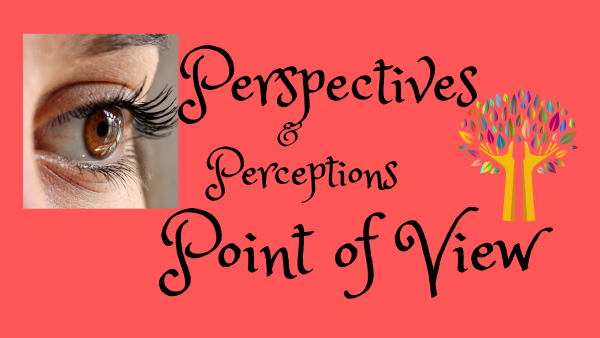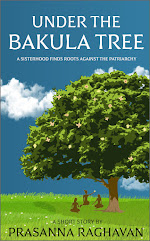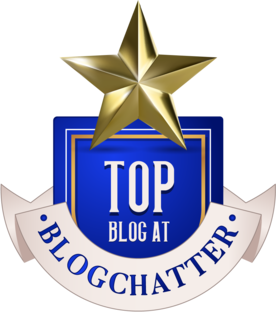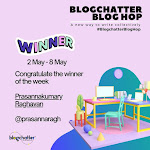Point of View-Bookish Matters.
Point of View is an essential tip in fiction writing. Most members of this group are authors. In this post, I am refreshing their memories on the subject.
Point of view (POV) is about the narrator's voice. Who is telling the story to whom, and under what circumstances? It is the perspective from which a story is told. It is about creating a strong connection between the reader and the protagonist, allowing readers to fully engage with the story and become invested in the outcome.
Getting into the historical side point of view, POV is a relatively new thing that authors began to consider in the era of modernist literature. In the premodern era, authors grabbed paper and wrote stories as they pleased.
Read about modernist literature: Characteristics of modernist literature.
Narrative Voices
There are different types of narrative voices as follows. The common points of view POV from which an author can narrate her story are as follows.
- First-person singular POV
- First-person, plural POV.
- Second-person POV
- Third-person limited POV
- Multiple third-person POV.
- Third-person omniscient.
First-person singular narrative.
In the first-person singular narrative, the protagonist tells his or her story. The singular first-person pronouns are I, me, my, mine, and myself. The I narrator. First-person singular.
This POV reveals an individual's experience directly through narration. A single character tells a personal story about what it means and how it feels to him or her. The information given is limited to the first-person narrator's direct experience and indirect experience to some extent.
First-person singular POV can create an intimate and effective narrative voice as if the narrator is speaking directly to the reader and sharing something private.
On the positive side, this is a good choice for a character-driven novel, where the character's state of mind and development are the fundamental interests of the book.
On the negative side, since the narrator's knowledge and experience are limited to his or her own experience, any event outside the narrator's observation has come to their attention to use in the story.
So, this is less suitable for a story with a large cast, all doing and experiencing their own things at different places.
First-person plural.
This POV uses the word " we " to describe a collective of individuals narrating as one. This is far less common than the first-person singular, and the pronouns used in this POV are our and ourselves.
- Famous examples of first-person POV.
"'Call me Ismael' one of the most famous stories of all times written from a first-person point of view - Moby-Dick; or, The Whale by Herman Melville."
"Harper Lee uses only one 'my' at the beginning of To Kill a Mocking Bird to set the first person point of view."
Second-person POV.
In this POV, the main character is the second-person 'you', telling us what you do and who you are. This POV is usually used in short stories, but it's difficult to sustain interest in long stories.
Third-person POV.
There are two types of third-person POV: third-person limited or attached and third-person omniscient.
Third-person limited POV.
Third-person limited point of view is when the narrator can see into only one character's mind. Famous examples include The Great Gatsby and the Harripotter series.
It is like the first-person POV, though narrated in the grammatical third person. It belongs to the person or people talked about.
The third-person pronouns include he, himself, herself, she, hers, herself, it, its, itself, they, them, theirs, and themselves.
- Head hopping
In the third-person limited, take caution that you cannot headhop within a scene. Head hopping is when the writer jumps between character perspectives in a scene. The narrative jumps from one character's thoughts and experiences to another without warning, sometimes within a paragraph or a line.
Head hopping is jarring for readers because it breaks the connection between the reader and the character. The sudden shift in perspective makes it confusing, disorienting and difficult to follow the narrative.
Multiple third-person POV.
In multiple third-person narratives, individual narrators must still know only what is in their own heads. Authors can, however, switch narrators from scene to scene or chapter, and it is better to keep the POV restricted to 3 or fewer. When you switch the narrator, clearly delineate.
Third-person omniscient.
You guessed it right from the heading: the narrator is getting the power of God. Using the pronouns he or she, the narrator, using this POV, can get into any character's perspective and consciousness, reveal his or her thoughts, go to any place, time, or setting, be aware of information the character does not have, and comment on events that have happened, are happening, or will happen.
This POV is a popular choice among novelists working with huge casts and complex plots, allowing them to move about in time, space, and character as needed, but that is also a drawback of the voice.
Conclusion
Point of view in writing is the position the narrator speaks from. It is expressed through the author's use of pronouns, which reveals the narrator's position. In the first person, the author uses the pronoun I throughout the writing; in the second person, you, and in the third person, she, he, it, and they.
Every piece of writing has a point of view. Sometimes, the genre chooses the POV. However, each point of view has its own strengths and weaknesses, and it is up to the author to decide which best suits their writing.
As an author, you have written books in different genres. Please share your experiences in choosing your book's POV.
This post is part of the Bookish League blog hop hosted by Bohemian Bibliophile.
**









41 comments
Instructive.
ReplyDeleteThank you, T.
DeleteThank you for brief and precise masterclass in PoVs. This is very helpful and would especially come handy for new writers and authors. I liked how, wherever possible you've given examples of where such narrations have been used.
ReplyDeleteThank you. You put a lot of effort into preparing a post, and such appreciation makes it worthwhile.
DeleteIt's rare to find a well-done first person POV in books. As a writer, I prefer third person POVs because they give me a chance to play around. I really liked the examples you have given :)
ReplyDeleteOk. The first person offers the readers the most intimate connection with the character’s inner turmoils and predicaments, which suits when there are a limited number of characters. An example of a well-done first-person book is The Great Gatsby by F. Scott Fitzgerald. But it has the shortage of a limited perspective.
DeleteI learnt a lot about narrating perspectives through this article , although some things would have been easier to grasp if we had actual examples and not just references and also Head hopping and third person omnipresent sounded so similar. I guess I will need to read more of this to get the differences.
ReplyDeleteI am happy to hear that you have benefited from the post. I shall try to clarify your doubts in an another comment by showing actual comments.
DeleteAn insightful post reagarding POV. I have attempted second person in a few stories, but am most comfortable with third person
ReplyDeleteThe second person has limited usage, suitable only for short stories. I am also comfortable with the third-person attached.
DeleteFirst person narratives are often difficult to do right, as are third person limited POVs. Instructive post for anyone writing non-fiction!
ReplyDeleteTrue, the first person narrative is difficult, but authors are comfortable with the third person attached/limited. I am also ok with that.
DeleteThis is such an informative post. As a writer of a blog andeasy to understand and someone who loves to dabble in fiction/short stories, I found the POV's mentioned by you extremely relevant and use. Will surely apply them in my stories. Looking forward to more such educative posts from you. Keep them coming.
ReplyDeleteThank you, Zenobia; I am so excited that you found use for my post and for prompting me to write more on similar topics.
DeleteAfter reading your post, I started to think about which POV has the strongest recall. I think first person tends to stay longer with us. But third person is probably the toughest to narrate.
ReplyDeleteHi, Ambica, that is interesting that you find first person stays longer with you and the third person is the toughest. That shows the authors' choices are not uniform with narratives.
DeleteThank you so much for adding a little example
ReplyDeleteI agree, POVs are such an important part of how a book is received by the reader. I’m personally super fond of first person POV, but it’s so interesting to know there are so many variations to it. I’m sure some of us were aware of the basic types, so thank you for expanding and adding an example of where this type of POV can be found too!
ReplyDeleteYes, of course, POV allows the readers to indulge in the characters' emotional experiences. Some authors are fond of the first person to give the readers the direct experience of what is happening in the character's mind.
DeleteThis is an absolutely fantastic short yet crisp masterclass for me. I consider myself still as a learner when it comes to authoring and your tips and suggestions gave me new angles to think when I write my next piece of story. Thank you so much for enlightening us.
ReplyDeleteI agree with you on the importance of POV in fiction and non-fiction writing, and I am delighted that you are finding use for that.
DeleteThird-person is the most common POV in both fiction and nonfiction.
ReplyDeleteI agree a hundred per cent about that, particularly the third-person attached.
DeleteThis was an enriching post...I could brush up on my hold over POVs. It was really thoughtful of you to write this post with such precision and clarity.
ReplyDeleteThank you so much for your appreciation. Everyone, including me, is a learner in the writing field as its technical side is developing.
DeleteThis is a precise and helpful post for fiction writers.
ReplyDeleteThank you, for appreciating the post, and POV is important in both fiction and non-fiction.
DeleteWhile reading the book, the reader never delves so deep in POV but it is commendable that you have analysed so many dissections in this. Well depicted.
ReplyDeleteYou are right regarding the reader's perception of POV, but it decides their emotional attachment to the characters.
Deleteit's fascinating to think about how POV has evolved over time. Back in the day, authors didn't really give it much thought – they just dove into writing their stories without worrying too much about who was telling them. But in the modern era, we've come to understand just how much POV can impact the reader's experience
ReplyDeleteYou're a hundred per cent on how the authors back, wrote stories, not considering the readers and creating the archetypal characters. It is a modern, inclusive approach to consider inclusivity and the readers' role.
DeleteI find different POVs suit different kinds of stories - and the secret is in getting that right, otherwise a promising story can fall flat!
ReplyDeleteHi, Ishieta, you're hundred percent right about that and all that depends on the author's choices.
DeleteThis comment has been removed by the author.
ReplyDeleteIndeed, every piece of writing is shaped by its point of view, and as you rightly point out, the choice of POV can greatly impact the tone, style, and effectiveness of the story. It's fascinating to hear about authors' experiences in selecting the POV for their books, as it offers valuable insights into their creative process and storytelling preferences.
ReplyDeleteSorry for the late comment. You have nailed it. This is the way authors inform the readers, which character's mind they open up to them in a scene or of many charcters.
Deletethis is a very educative post about point of views. Lovely for readers like me who have to understand how POVworks in books. Thanks for this post.
ReplyDeleteThank you, I hope you find the info useful for you.
DeleteI have use first person POV for all the stories I have written so far as I think it seems simple to write for me.
ReplyDeleteYeah, how your characters best connect with the readers is the basis for chosing the POV.
DeleteI was aware of the POV in writing but not the terms head hopping and third-person omniscient. As a reader, I prefer reading a story narrated in third person. First person narrative sometimes lacks depth if not executed correctly.
ReplyDeletePost a Comment